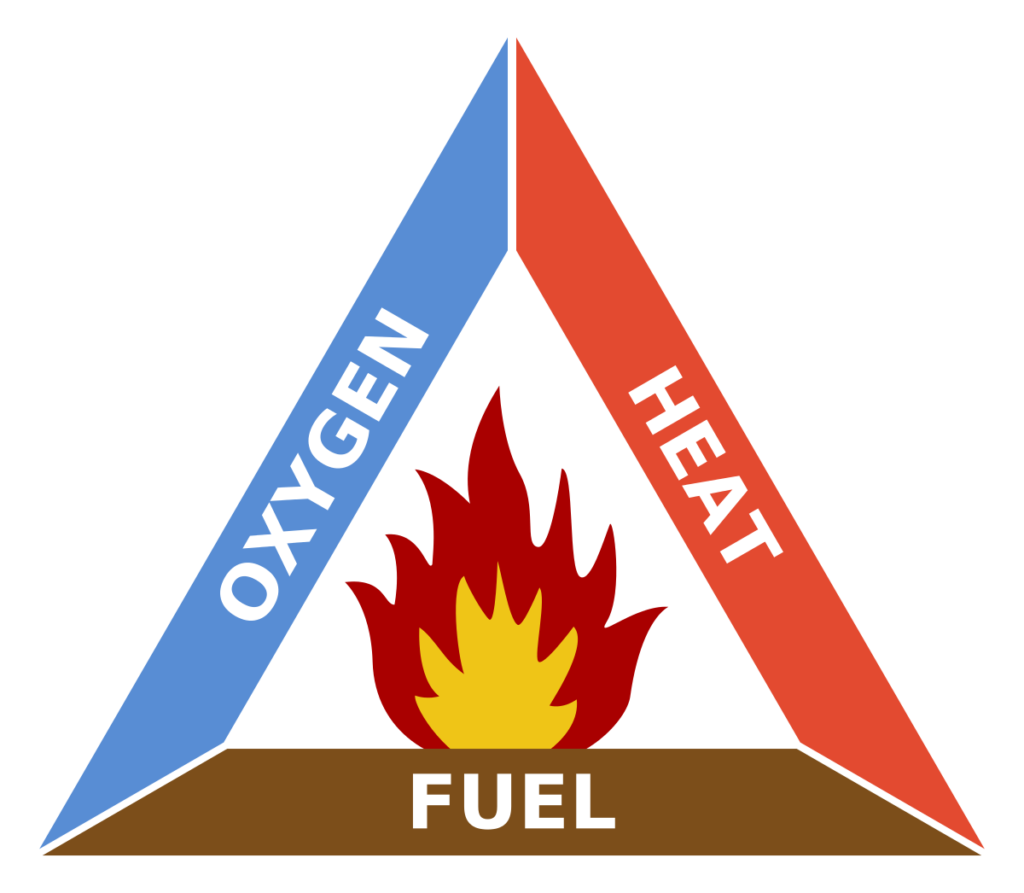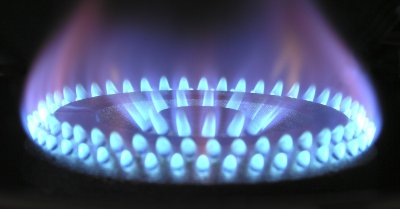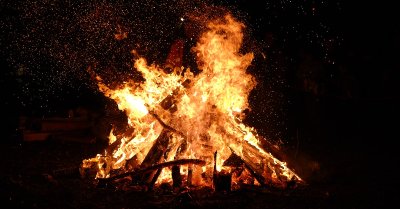Fire Triangle Explained: Everything to Know!

Estimated reading time: 5 minutes
Introduction
Sticking to the basics can be very useful advice. This rings true particularly when it comes to fire safety. The Fire Triangle is a very straightforward concept, designed to help you fight fires safely and simply. You can apply your knowledge of the fire triangle to a particular situation. Take a look at our free Fire Triangle poster and then read this article to find out more.
The Fire Triangle
The fire triangle is made up of three parts. Let’s explore what they are exactly and, in turn, how to use our newfound knowledge to extinguish a fire.
Heat
All fires require heat energy to ignite. This heat energy in turn produces more heat energy and ensures that the fire keeps burning.
Collapsing the heat component of a fire should be relatively simple, right? Doesn’t water often cool down a fire? Yes, however, whilst water can be an ally, water is not appropriate for all fire scenarios. What would happen if you sprayed water on an electrical fire, for example? The water would help conduct electricity, further spreading the energy causing the fire. Thus, it’s important to know that the type of fire and your available firefighting equipment dictate which area of the fire triangle you should target.

Fuel
There are a whole host of common fuels for fires. Paper, wood, aerosol cans and cooking oils, for example. Understanding which of these materials (liquid, gas or solid) could potentially start a fire in your home or commercial premises then dictates how you might prepare for and deal with it.
As a result, collapsing a fire via the fuel component can be tricky. Whilst electrical fires are common in offices, for example, you might also see flammable liquid fires or gas fires. Your best bet is to use your legally-required fire risk assessment to gather as much information as possible regarding what could happen in your office and then prepare accordingly. If you can’t remove a risk, reduce it as much as possible.
Oxygen
The final component of the triangle is oxygen. Fortunately for a fire, oxygen is very easily accessible. But wouldn’t oxygen be very difficult to entirely remove?
Well, not always. If the fire is small, a fire blanket can be one of your best weapons. Fire blankets can immediately starve a fire of oxygen, if applied correctly. Similarly, particular extinguishers, such as CO2 Extinguishers, can create a barrier between the fuel and oxygen in the atmosphere.
Fire Triangle Explained in Real-World Scenarios
In the Office
An overloaded plug-extension cord in the workplace starts to heat up and ignites, causing a small but quickly-spreading fire.
Whilst there are many varieties of extinguisher, CO2 is the safest here. Its chemical make-up prevents further conduction of electricity, as well as stops a fuel source from oxygen.
Once the fire is out, you should then turn the plug socket off, if it is not itself on fire and you can do so safely. If you cannot do so safely, you should turn the power off at the mains. This ensures that the fuel component, in this case the electricity, does not restart the fire.
In the Kitchen
Whether you’re cooking professionally or at home, fires are always a possibility. In many cases, oil in a pan ignites and gets out of control.
You should not use water in this situation. It does not mix with hot oil and grease well and will cause an eruption in the pan, spreading the fire. If you can, turn off the heat and cover the pan with a metal lid. If this not an option or the fire continues, a Class B dry chemicals extinguisher, present in most commercial kitchens, is the best firefighting tool in this situation. However, take care to stand well away from the fire – even as far as the other end of the kitchen – before you trigger the extinguisher. The pressure maintained in the extinguisher can push the fire onto new areas of the kitchen, if fired from close range. In this scenario, you can reasonably aim to collapse the heat, fuel and oxygen components of the triangle, with either of these methods of extinguishment.
At the Family Bonfire
Often these sorts of flames spiral out of control are mostly fuelled by wood or paper. If you have been using lighter fluid or something similar, the fire can be far more dangerous. However, your typical bonfire can be very simply extinguished with water.
Of course, some bonfires aren’t held responsibly. To reignite dying embers, some people use petrol, lighter fluid and, probably worst of all, aerosol spray. These fuels can spread the fire and take it out of your control; liquid fuel fires are notoriously difficult to put out. Similarly to cooking oil fires, a CO2 Extinguisher is a good choice here. However, as most houses don’t have these to hand, so sand, wet cloths and earth can be helpful.

Conclusion
Remember, if a fire ever gets past the point at which you can reasonably collapse the fire triangle, you must evacuate and call the fire brigade. Hopefully, however, you may now have enough of an understanding of what starts and sustains a fire, which will in turn help you to fight one successfully.
